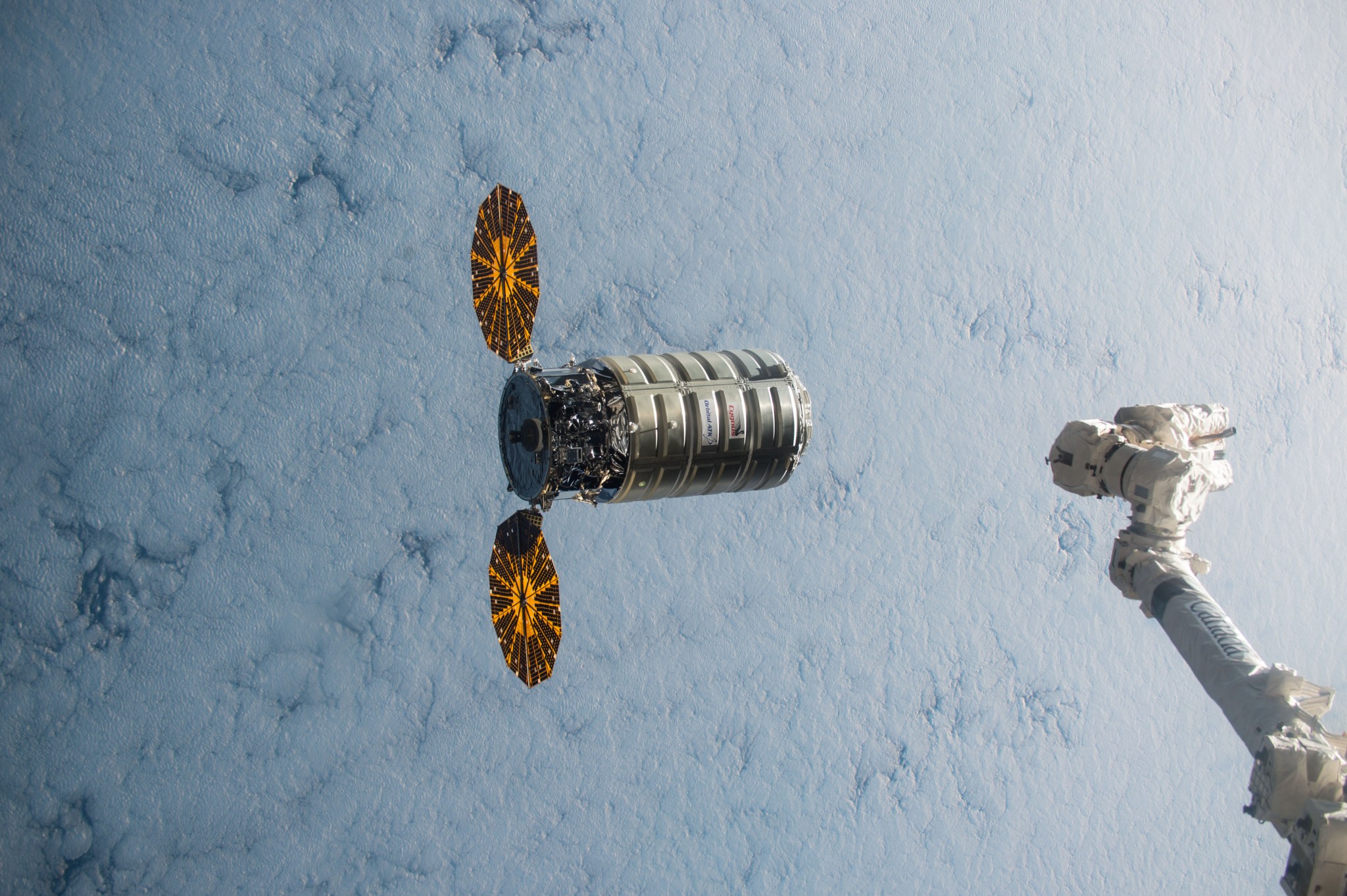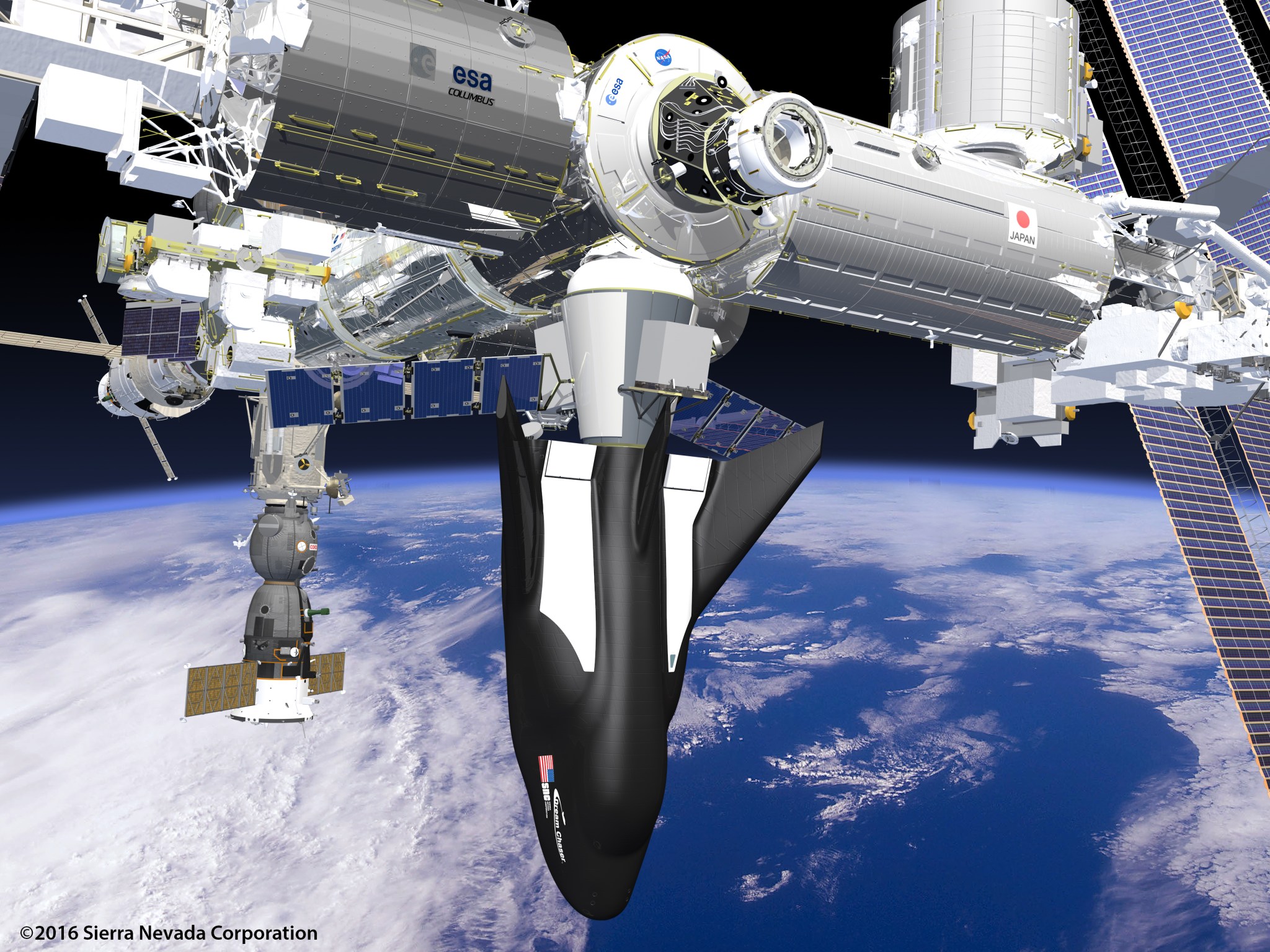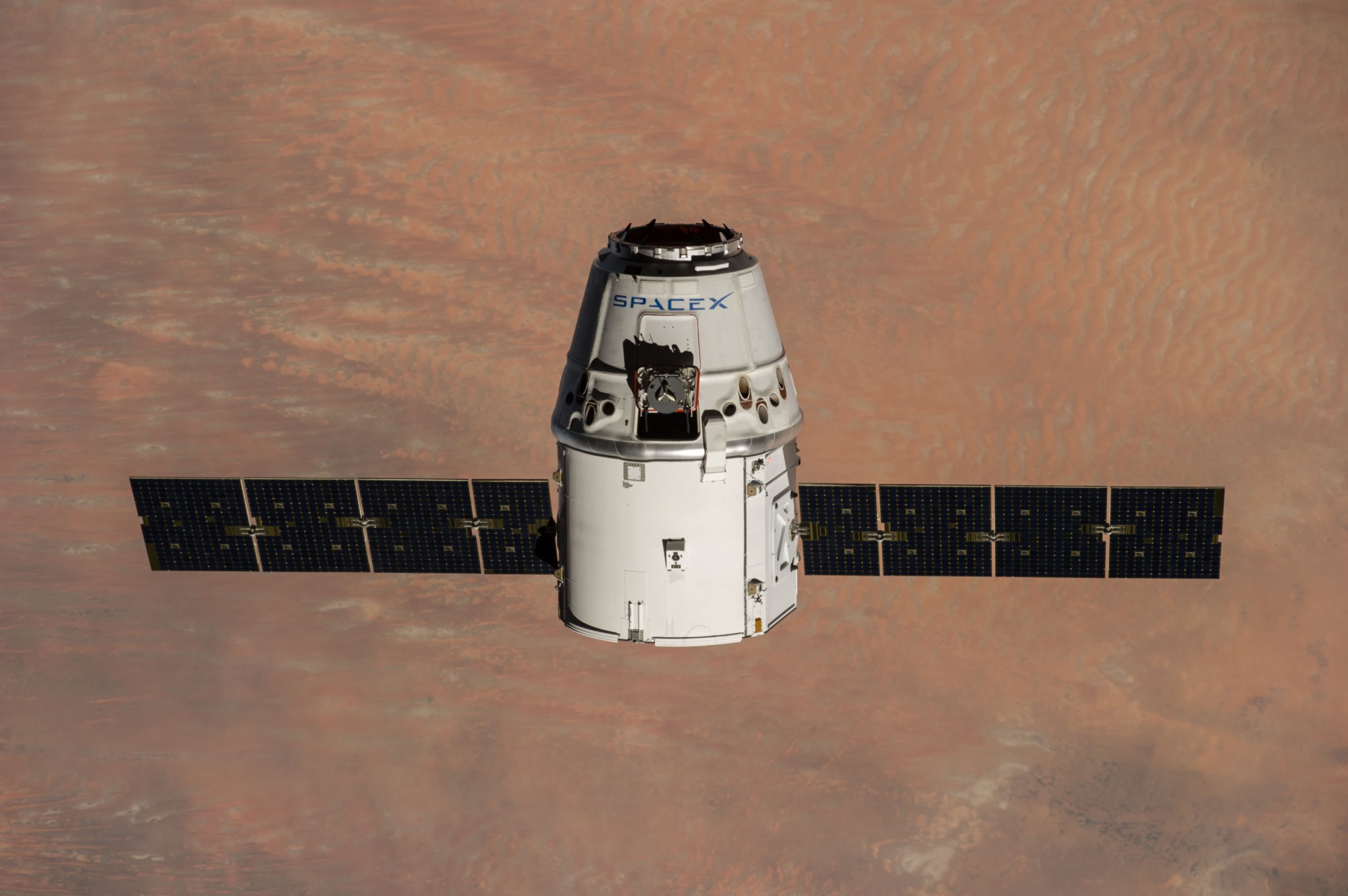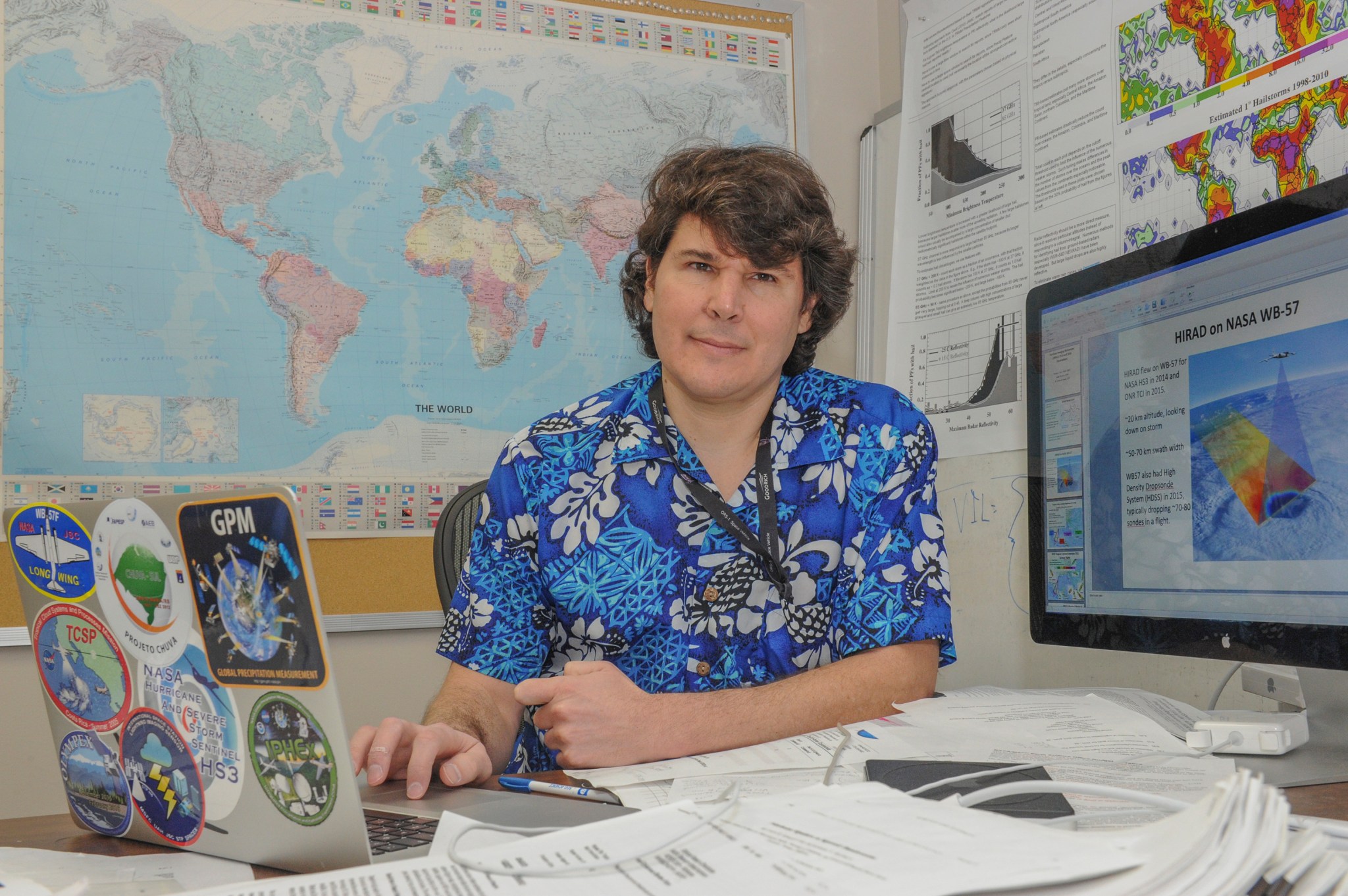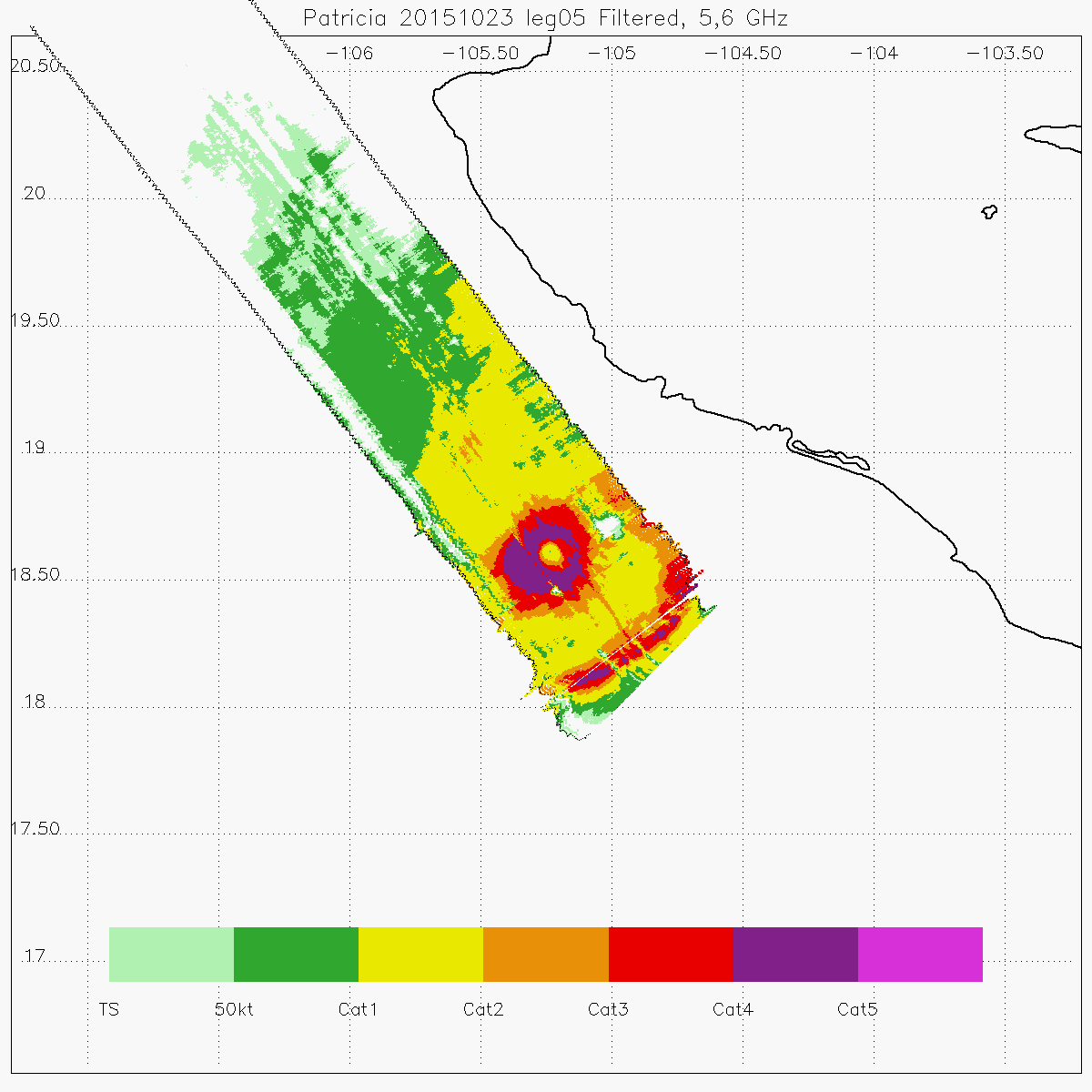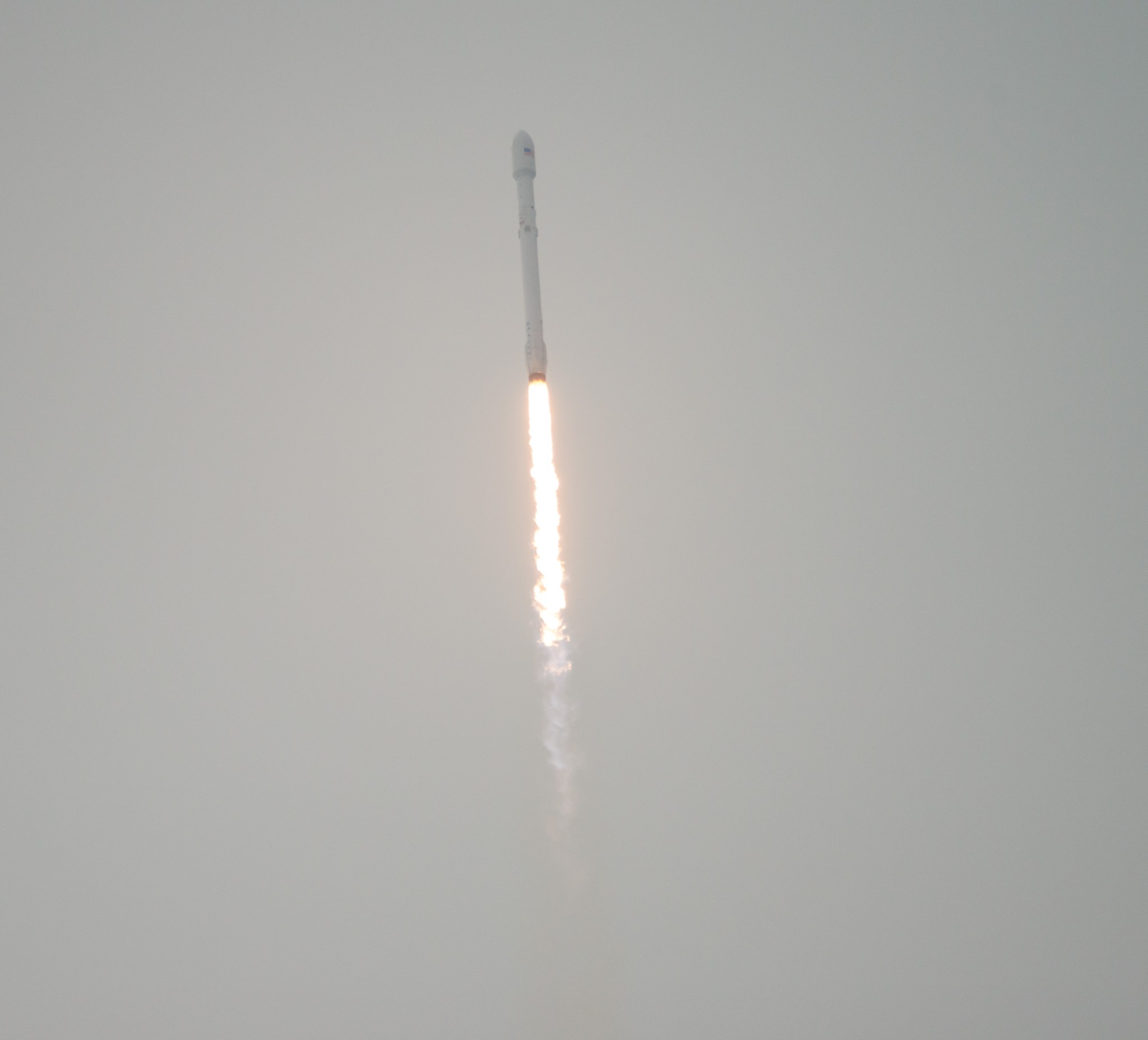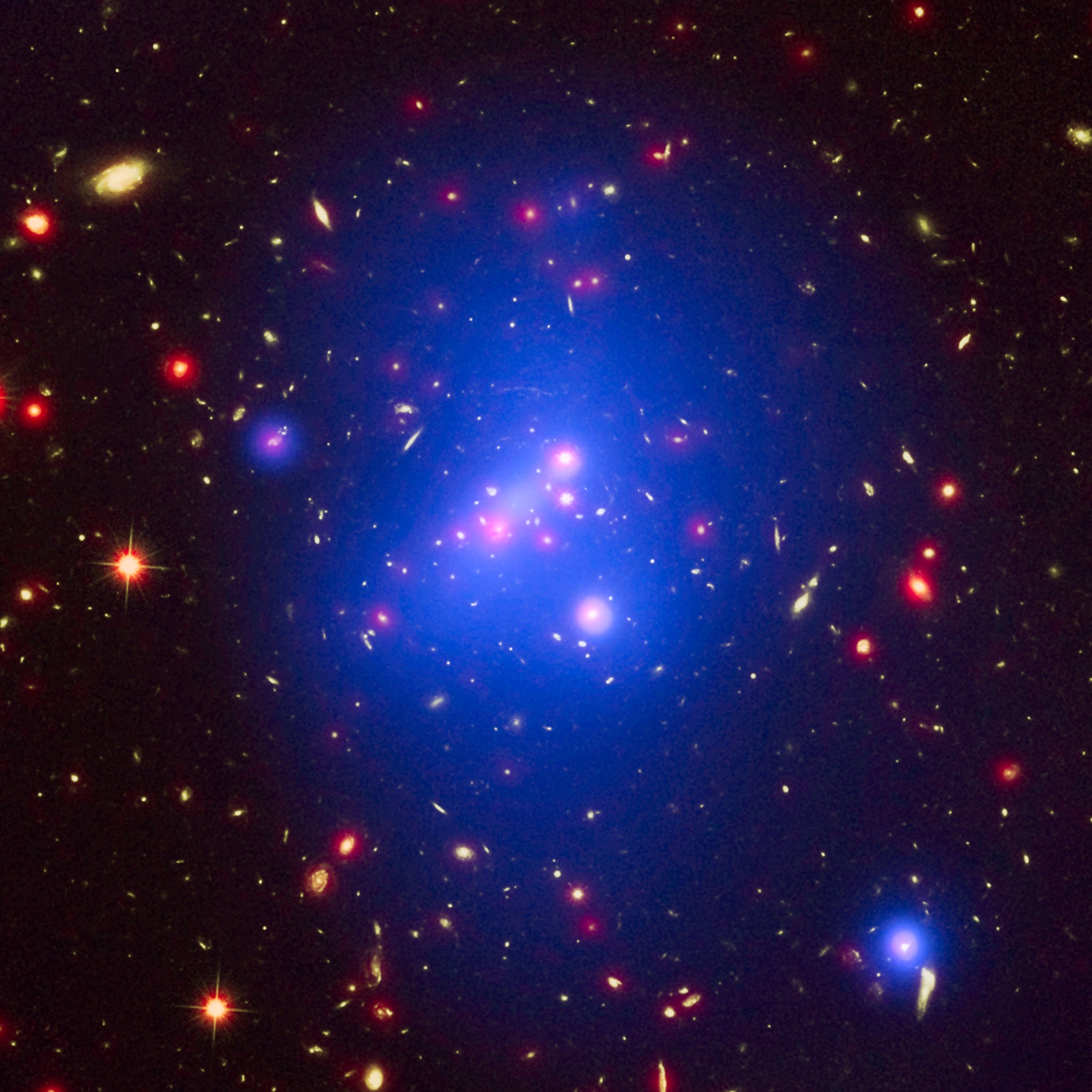In This Week’s Star
- NASA Awards International Space Station Cargo Transport Contracts
- Lightfoot and Roe Discuss NASA’s New Operating Model at Jan. 13 All-Hands Meeting
- Measuring Hurricanes: Q&A with NASA Marshall’s Dan Cecil
- Jason-3 Launches to Monitor Global Sea Level Rise
- NASA’s Great Observatories Weigh Massive Young Galaxy Cluster
- Marshall’s Employee Communications Team is Here to Help Get Your Word Out
- This Week in NASA History: Marshall Completes Buildup of Saturn I S-I Stage — Jan. 18, 1961
- Progress on New Test Stand and Launch Vehicle Stage Adapter at Marshall Featured in ‘This Week @NASA’
- Obituaries
NASA Awards International Space Station Cargo Transport Contracts
NASA has awarded three cargo contracts to ensure the critical science, research and technology demonstrations that are informing the agency’s journey to Mars are delivered to the International Space Station from 2019 through 2024. The agency unveiled its selection of Orbital ATK of Dulles, Virginia; Sierra Nevada Corporation of Sparks, Nevada; and SpaceX of Hawthorne, California, to continue building on NASA’s resupply partnerships.
These Commercial Resupply Services, CRS-2, contracts are designed to obtain cargo delivery services to the space station, disposal of unneeded cargo and the return of research samples.
“Few would have imagined back in 2010 when President Barack Obama pledged that NASA would work ‘with a growing array of private companies competing to make getting to space easier and more affordable,’ that less than six years later we’d be able to say commercial carriers have transported 35,000 pounds of space cargo, and counting, to the International Space Station — or that we’d be so firmly on track to return launches of American astronauts to the ISS from American soil on American commercial carriers. But that is exactly what is happening,” said NASA Administrator Charles Bolden. “Today’s announcement is a big deal that will move the president’s vision further into the future.”
The contracts, which begin upon award, guarantee a minimum of six cargo resupply missions from each provider. The contracts also include funding ISS integration, flight support equipment, special tasks and studies and NASA requirement changes.
“The second generation of commercial cargo services to low-Earth orbit begins today,” said Kirk Shireman, ISS Program manager at NASA’s Johnson Space Center. “By engaging American companies for cargo transportation, we can focus our attention on using this one-of-a-kind laboratory in the sky to continue advancing scientific knowledge for the benefit of all humanity.”
Selecting multiple providers assures access to ISS so crew members can continue to conduct vital research. Awarding multiple contracts provides more options and reduces risk through a variety of launch options and mission types, providing the ISS program a robust portfolio of cargo services that will be necessary to maximize the utility of the station.
NASA has not yet ordered any missions, but will make a total of six selections from each menu of mission options at fixed prices, as needed. Discussions and engineering assessments will begin soon, leading to integration activities later this year to ensure all space station requirements are met, with the first missions beginning in late 2019.
“These resupply flights will be conducted in parallel with our Commercial Crew Program providers’ flights that enable addition of a seventh astronaut to the International Space Station. This will double the amount of crew time to conduct research,” said Julie Robinson, chief scientist for the ISS Program. “These missions will be vital for delivering the experiments and investigations that will enable NASA and our partners to continue this important research.”
The agency applied knowledge gained from the first commercial resupply contracts with Orbital ATK and SpaceX and required a number of key enhancements for these contracts. This includes starting with a requirement for a minimum of six missions as opposed to delivery of metric tons; a variety of delivery, return and disposal capabilities for both pressurized and unpressurized cargo, as well as an optional accelerated return; and the addition of an insurance requirement to cover damage to government property during launch services, reentry services or transportation to, from, in proximity of, or docking with the space station.
NASA’s service contracts to resupply the space station have changed the way the agency does business in low-Earth orbit. With these contracts, NASA continues to advance commercial spaceflight and the American jobs it creates.
NASA’s Marshall Space Flight Center helped build ISS and continues to manage critical station hardware and science operations. The Marshall team works around the clock, 365 days a year to help crew members advance scientific knowledge and demonstrate new technologies, making research breakthroughs not possible on Earth that also will enable long-duration exploration into deep space. A truly global endeavor, more than 200 people from 15 countries have visited the unique microgravity laboratory that has hosted more than 1,700 research investigations from researchers in more than 83 countries.
Lightfoot and Roe Discuss NASA’s New Operating Model at Jan. 13 All-Hands Meeting
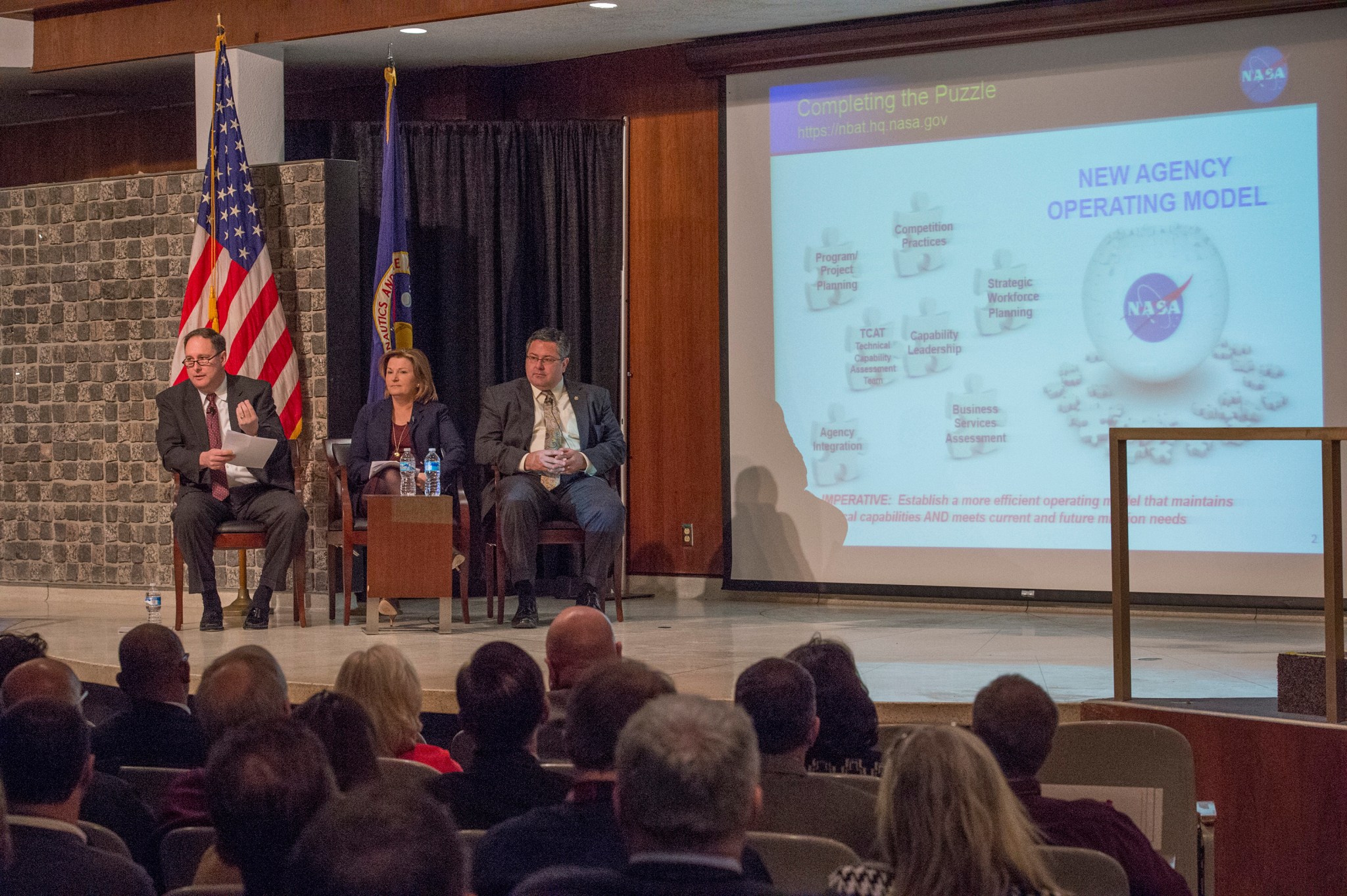
NASA Associate Administrator Robert Lightfoot, left, and Deputy Associate Administrator Lesa Roe, center, visited NASA’s Marshall Space Flight Center on Jan. 13 to share the progress toward NASA’s new operating model and the agency’s path forward on the journey to Mars. The two — who were joined onstage by Acting Center Director Todd May, right — are holding similar meetings at all NASA centers, presenting updates on the efforts of NASA’s Non-Budget Action Team and related senior leadership initiatives. Lead by Lightfoot, NBAT’s goal is to develop of a more efficient operating model for NASA that balances maintaining and advancing the agency’s critical capabilities with performing current and future missions. For more information about the NBAT, click here. (NASA/MSFC/Emmett Given)
Measuring Hurricanes: Q&A with NASA Marshall’s Dan Cecil
Despite what Earth science researchers know about hurricanes, NASA’s Dan Cecil understands that there are always more questions than answers. That’s what makes the job so interesting. Cecil, an atmospheric scientist at NASA’s Marshall Space Flight Center, studies the internal dynamics of hurricanes to unpack some of those questions and help coastal emergency managers better prepare for storms to come.
Cecil uses an experimental instrument called the Hurricane Imaging Radiometer, HIRAD, to gather detailed information about wind speeds and rain intensity inside hurricanes. HIRAD peers through a storm’s heaviest rains and thickest clouds to measure strong winds at the ocean surface. These measurements glean important information that helps improve forecast models.
With HIRAD mounted in the underbelly of NASA’s high-flying WB-57 aircraft based out of NASA’s Johnson Space Center, NASA pilots flew 10 crewed flights over four named storms — Erika, Marty, Joaquin and Patricia — during a record-breaking 2015 hurricane season. Providing data more detailed than what satellites provide, the WB-57 reaches altitudes high enough to fly over the storms — above 60,000 feet.
The investigations were part of the Office of Naval Research’s Tropical Cyclone Intensity experiment, TCI 2015. TCI is an Office of Naval Research Direct Research Initiative collaborative experiment with the Naval Research Laboratory, industry and universities. A key focus of the research is to study how hurricanes change and intensify.
Before discussing his findings at the American Meteorological Society annual meeting Jan. 11 in New Orleans, Cecil took some time to sit down and talk about his work.
Why is it important to study hurricanes?
Hurricane Katrina caused upwards of 2,000 deaths and $100 billion in damages in 2005. It could have easily been much worse. A few historic hurricanes in India and Bangladesh have caused more than 100,000 deaths each. We will never eliminate all the deaths and damage from hurricanes. But the more we know about their structure, and the better we can forecast them, the more we can limit those impacts.
What has working with HIRAD taught you about hurricanes in general?
Working with HIRAD reinforces for me how hard it is to really determine the strongest surface winds in a hurricane. HIRAD measures energy that is related to the amount of foam on the ocean surface, and that foam coverage is related to the wind speed. It maps this out over a larger area than similar instruments, so it has a better chance of “finding” the location with the strongest wind.
How did you become interested in Earth science?
From the time I was a small child, I was fascinated by clouds, weather maps and radar pictures on TV and watching the rain or snow fall. When my first college classes were not as interesting as I expected, I thought about changing majors. Then I caught myself spending about 20 minutes just staring at clouds, watching them grow, fascinated, and realized I would regret switching to anything else.
What makes a good scientist?
Words like “skeptic” have gotten a negative connotation, but a scientist is supposed to be skeptical. Question your models and your pre-conceived notions. Question your data. A good scientist has to be able — and willing — to observe what is really happening, and figure out how to either reconcile that with a conceptual model or create a new conceptual model.
Do you have a story or work experience that sticks in your mind and speaks to the impact of what you do?
It wasn’t really a work experience, but the April 27, 2011, tornadoes here in Alabama stand out. I was lucky I only lost some shingles in those storms, but I couldn’t get to my house until around midnight and had to drive around debris to get there, not knowing what I would find in the darkness. The next morning I walked to what used to be a neighbor’s house, and helped pick up the unrecognizable pieces. I was scheduled to go to Oklahoma a few days later for a project taking measurements of thunderstorms. I told my colleagues there I was never so glad to be in Oklahoma, safely away from our tornado alley.
Jason-3 Launches to Monitor Global Sea Level Rise
Jason-3, a U.S.-European oceanography satellite mission with NASA participation that will continue a nearly quarter-century record of tracking global sea level rise, lifted off from Vandenberg Air Force Base in California Jan. 17 at 12:42 p.m. aboard a SpaceX Falcon 9 rocket. The mission will improve weather, climate and ocean forecasts; including helping NOAA’s National Weather Service and other global weather and environmental forecast agencies more accurately forecast the strength of tropical cyclones. For more information, click here. (NASA/Bill Ingalls)
NASA’s Great Observatories Weigh Massive Young Galaxy Cluster
Astronomers have used data from three of NASA’s Great Observatories to make the most detailed study yet of an extremely massive young galaxy cluster. This rare cluster, which is located 10 billion light years from Earth, weighs as much as 500 trillion suns. This object has important implications for understanding how these megastructures formed and evolved early in the universe.
The galaxy cluster called IDCS J1426.5+3508, IDCS 1426 for short, is so far away that the light detected is from when the universe was roughly a quarter of its current age. It is the most massive galaxy cluster detected at such an early age.
First discovered by the Spitzer Space Telescope in 2012, IDCS 1426 was observed using the Hubble Space Telescope and the Keck Observatory to determine its distance. Observations from the Combined Array for Millimeter Wave Astronomy indicated it was extremely massive. New data from the Chandra X-ray Observatory confirm the galaxy cluster mass and show that about 90% of the mass of the cluster is in the form of dark matter, a mysterious substance detected so far only through its gravitational pull on normal matter composed of atoms.
“We are really pushing the boundaries with this discovery,” said Mark Brodwin of the University of Missouri at Kansas City, who led the study. “As one of the earliest massive structures to form in the universe, this cluster sets a high bar for theories that attempt to explain how clusters and galaxies evolve.”
Galaxy clusters are the largest objects in the universe bound together by gravity. Because of their sheer size, scientists think it should take several billion years for them to form. The distance of IDCS J1426 means astronomers are observing it when the universe was only 3.8 billion years old, implying that the cluster is seen at a very young age.
The data from Chandra reveal a bright knot of X-rays near the middle of the cluster, but not exactly at its center. This over-dense core has been dislodged from the cluster center, possibly by a merger with another developing cluster 500 million years prior. Such a merger would cause the X-ray-emitting, hot gas to slosh around like wine in a glass that is tipped from side to side.
“Mergers with other groups and clusters of galaxies should have been more common so early in the history of the universe,” said co-author Michael McDonald of the Massachusetts Institute of Technology in Cambridge. “That appears to have played an important part in this young cluster’s rapid formation.”
Aside from this cool core, the hot gas in the rest of the cluster is very smooth and symmetric. This is another indication that IDCS 1426 formed very rapidly. In addition, astronomers found possible evidence that the amount of elements heavier than hydrogen and helium in the hot gas is unusually low. This suggests that this galaxy cluster might still be in the process of enriching its hot gas with these elements as supernovae create heavier elements and blast them out of individual galaxies.
“The presence of this massive galaxy cluster in the early universe doesn’t upset our current understanding of cosmology,” said co-author of Anthony Gonzalez of University of Florida in Gainesville. “It does, however, give us more information to work with as we refine our models.”
Evidence for other massive galaxy clusters at early times has been found, but none of these matches IDCS 1426 with its combination of mass and youth. The mass determination used three independent methods: a measurement of the mass needed to confine the hot X-ray-emitting gas to the cluster, the imprint of the cluster’s gaseous mass on the cosmic microwave background radiation and the observed distortions in the shapes of galaxies behind the cluster, which are caused by the bending of light from the galaxies by the gravity of the cluster.
These results were presented at the 227th meeting of the American Astronomical Society held in Kissimmee, Florida. A paper describing these results has been accepted for publication in The Astrophysical Journal and is available here. NASA’s Marshall Space Flight Center manages the Chandra program for NASA’s Science Mission Directorate. The Smithsonian Astrophysical Observatory in Cambridge, Massachusetts, controls Chandra’s science and flight operations.
Marshall’s Employee Communications Team is Here to Help Get Your Word Out
By Jenalane Rowe
According to employee communications research conducted by the Institute for Public Relations over several years, an employee’s direct supervisor remains his or her most trusted source of information. That is good news for supervisors and great news for NASA’s Marshall Space Flight Center. But supervisors are busy, and sometimes strategic and effective communication can take second place to competing priorities and tasks. NASA Marshall Space Flight Center’s employee communications team can help.
“The role of the employee communications team is to act as a bridge between the center, supervisors and employees,” said Johnny Stephenson, director of Marshall’s Office of Strategic Analysis & Communications. “Our goal is to use strategic communication methods and platforms to ensure that messages are delivered to you and your employees clearly and effectively.”
George Bernard Shaw once said, “The single biggest problem in communication is the illusion that it has taken place.” This illusion is created because many people believe that simply putting messages out gets the job done. However, that approach is not often founded on any sort of data reflecting the effectiveness of the message or the medium. Was the right communications platform used for that type of message? How does the sender know he or she has reached the intended audience? Should more than one platform be used? Can the impact or reach of the message be measured? The answers can be the difference between the illusion of communication and the reality of strategic communications.
The Marshall employee communications team considers these types of questions and more. Through collaborative partnerships with the Office of Center Operations, Office of the Chief Information Officer, Office of Human Capital, Marshall Television and Marshall’s graphics department, each employee communications initiative is approached creatively and individually in a way that can be measured for effectiveness based on data and past experiences.
“We track and measure the effectiveness of our internal messaging platforms,” said Stephenson. “Based on the data we gather, past experiences and partnerships across the center, we are continually evolving in a way that allows us to offer the best possible internal communications approach rather than simply assuming what we do works.”
The platforms listed below are the most widely distributed and widely viewed in the employee communications toolkit. These platforms would be a great starting point for communicating your organizations’ message center-wide:
• Marshall Star — a mobile-friendly electronic newsletter distributed weekly to the entire Marshall workforce designed to increase awareness of strategic business initiatives, center capabilities and accomplishments, center events and activities, program and project milestones, and NASA/Marshall news. To submit story ideas for an upcoming issue of the Star, please email Brian Massey, Marshall Star editor.
• Employee Television — a daily broadcast of information on monitors located throughout Marshall to increase awareness regarding center activities, events, training opportunities and news. Recently upgraded to a new format, ETV now includes animated electronic signs, local weather and video highlighting the work of various Marshall programs and projects. To submit content or ideas for ETV, please email Betty Humphery or Jena Rowe.
• Inside Marshall on ExplorNet — Inside Marshall, the ExplorNet homepage, is developed to make vital and day-to-day information more easily accessible to team members as well as to foster a sense of community among employees. For information about how you can have your information displayed on Inside Marshall, please contact Jena Rowe.
• Email messaging — This Just In, Special Heads Up and Message from the Center Director are all center-wide email messages available for mass communication. In 2015, specific branding was applied to each email message so employees can know what to expect from the respective email. This Just In messages are used as a platform of communication by the Office of Center Operations regarding center operation status, emergencies, road closures/detours, building operation status, etc. Special Heads Up messages are used as platform for communicating information such as events that significantly impact the workforce and information from the Office of Human Capital. Message from the Center Director is specifically used as a platform for the center director to communicate messages to the entire Marshall team in a timely manner.
For more information and a complete list of available employee communications platforms, please visit the Employee Communications site or email the employee communications team.
Rowe, an ASRC Federal/Analytical Services employee, supports the Office of Strategic Analysis & Communications.
This Week in NASA History: Marshall Completes Buildup of Saturn I S-I Stage — Jan. 18, 1961
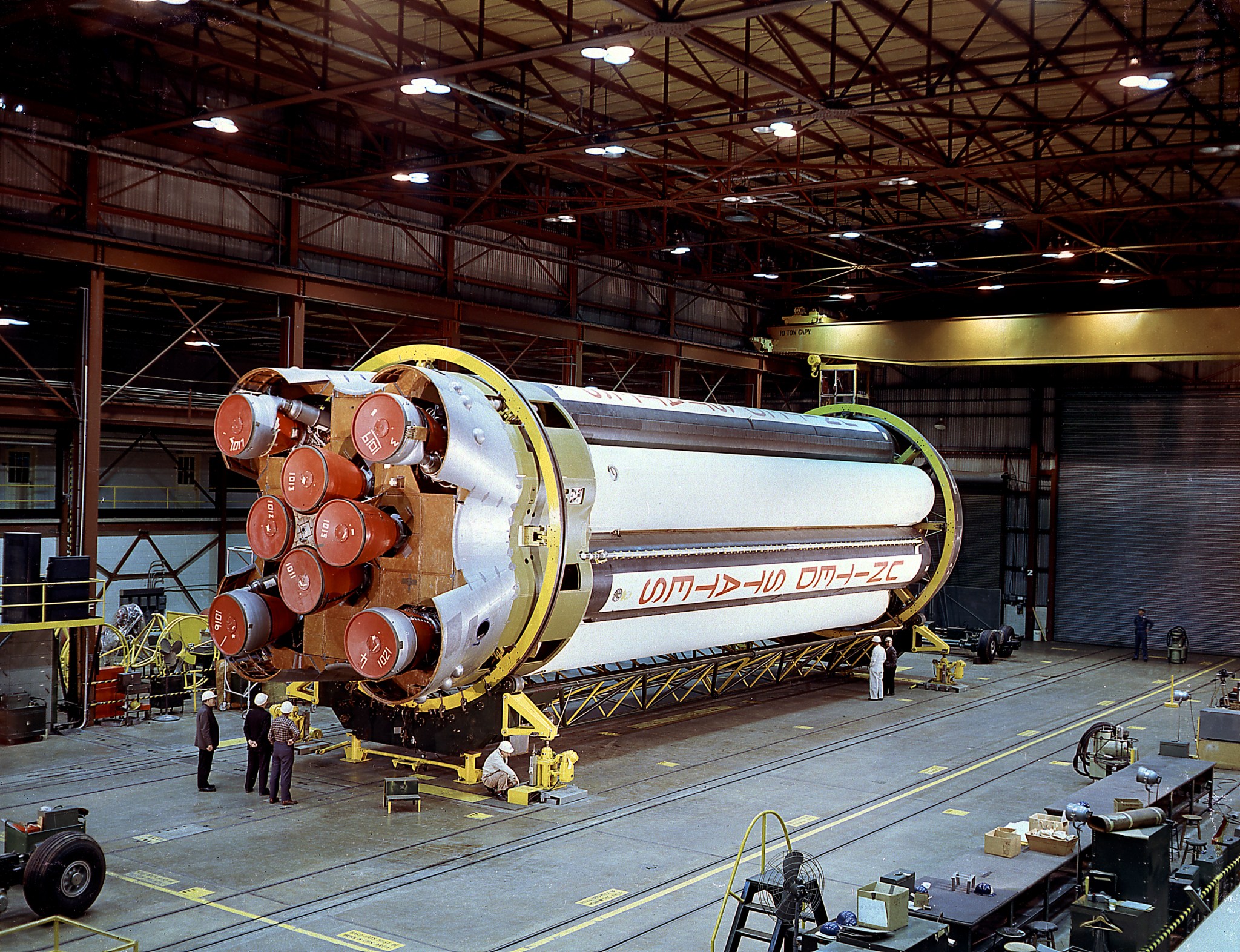
This week in 1961, NASA Marshall Space Flight Center engineers readied the Saturn I S-I stage for checkout in Building 4705. The Saturn I S-I stage had eight H-1 engines clustered, using liquid oxygen/kerosene-1 propellants capable of producing a total of 1,500,000 pounds of thrust. Originally developed by Dr. Wernher von Braun’s team at the U.S. Army Ballistic Missile Agency, 10 Saturn I rockets were flown before being replaced by the Saturn IB. Saturn I launches enabled the Pegasus satellites and the flight verification of the Apollo Command and Service Module aerodynamics in the launch phase. The NASA History Program documents and preserves NASA’s remarkable history through a variety of products — photos, press kits, press releases, mission transcripts and administrators’ speeches. For more pictures like this one and to connect to NASA’s history, visit the History Program’s Web page. (NASA)
Progress on New Test Stand and Launch Vehicle Stage Adapter at Marshall Featured in ‘This Week @NASA’
Two symbols of the progress at NASA’s Marshall Space Flight Center with development of the Space Launch System are featured in the latest edition of “This Week @NASA,” a weekly video program broadcast nationwide on NASA-TV and posted online.
The first steel for a second new structural test stand began rising at Marshall on Jan. 6. When completed this summer, the 85-foot-tall Test Stand 4697 will use hydraulic cylinders to subject the liquid oxygen tank and hardware of the massive SLS core stage to the same loads and stresses it will endure during a launch.
Also at Marshall, the final vertical weld was completed recently on the bottom portion of the test version of the rocket’s Launch Vehicle Stage Adapter. Engineers have just two more major welds to finish the test article.
View this and previous episodes at “This Week @NASA” or at https://www.youtube.com/user/NASAtelevision.
Obituaries
Robert E. Jones, 95, of Akron, Ohio, died Jan. 11. He retired from the Marshall Center in 1983 as an aerospace engineer.

























